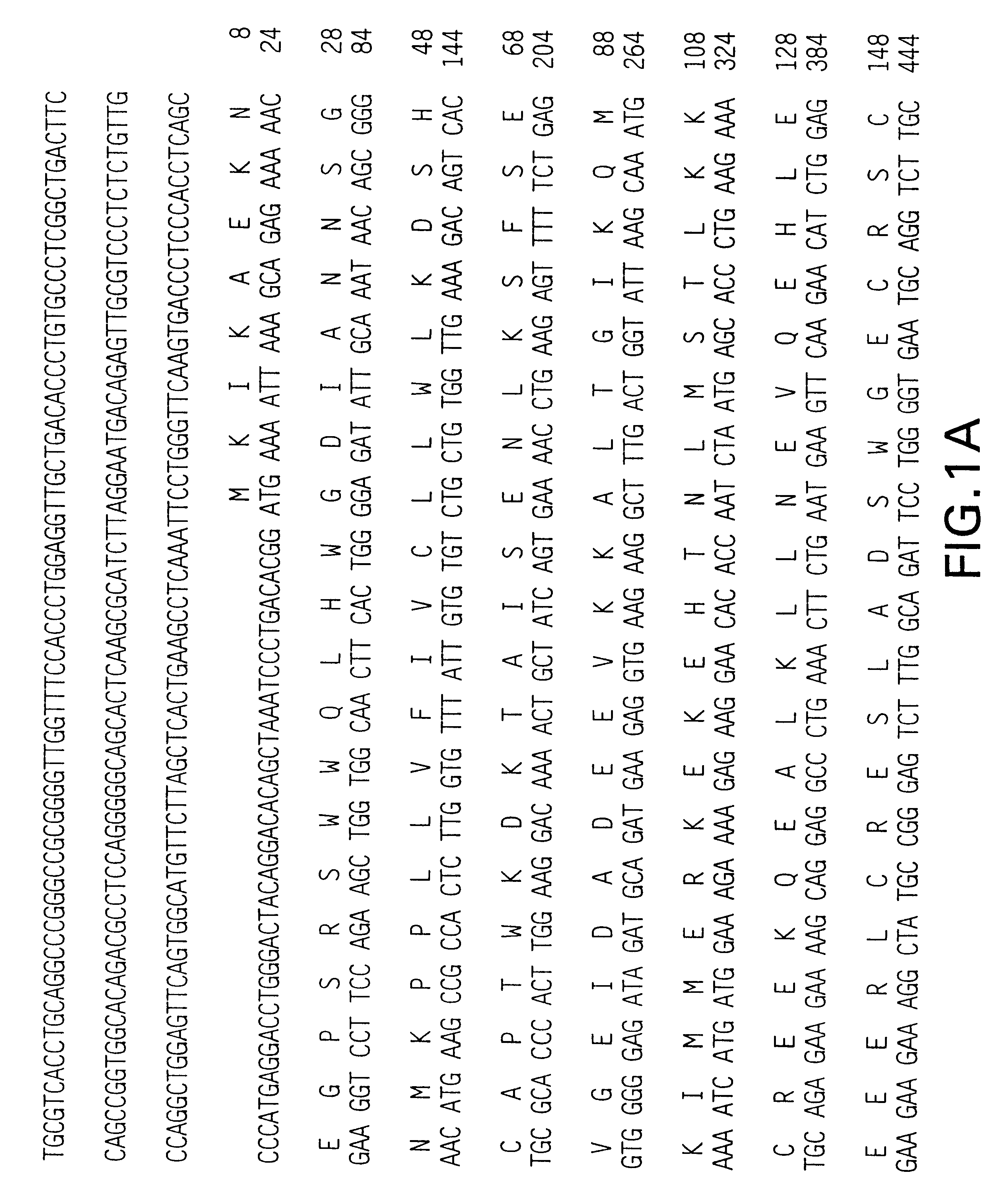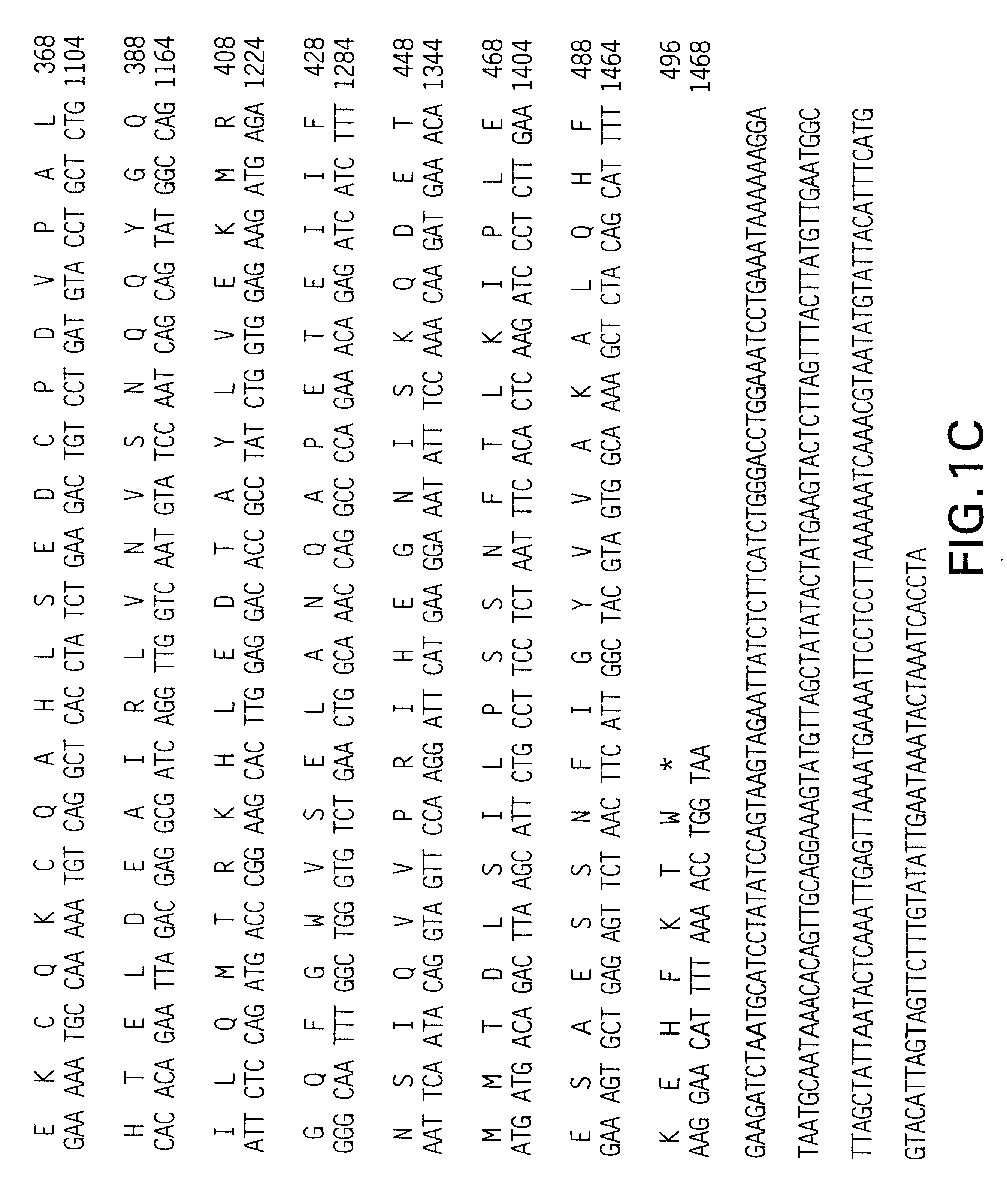Methods and compositions for diagnosing and treating chromosome-18p related disorders
a technology of chromosome 18p and composition, applied in the field of hkng1 gene, can solve the problems of inability to predict the effectiveness of drug treatments, lack of adequate drugs, and risk of progressive deterioration, and achieve the effect of affecting the safety and efficacy of a therapeutic agen
- Summary
- Abstract
- Description
- Claims
- Application Information
AI Technical Summary
Benefits of technology
Problems solved by technology
Method used
Image
Examples
Embodiment Construction
5.1. The HKNG1 Gene
HKNG1 nucleic acid molecules are described in the section. Unless otherwise stated , the term "HKNG1 nucleic acid" refers collectively to the sequences described herein.
A human HKNG1 cDNA sequence (SEQ ID NO: 1) encoding the full length amino acid sequence (SEQ ID NO: 2) of the HKNG1 polypeptide is shown in FIGS. 1A-1C. The human HKNG1 gene encodes a secreted polypeptide of 495 amino acid residues, as shown in FIGS. 1A-1B, and SEQ ID NO: 2. The nucleotide sequence of the portion of the cDNA corresponding to the coding sequence for HKNG1 (SEQ ID NO:2) is depicted as SEQ ID NO:5.
The HKNG1 sequences of the invention also include splice variants of the HKNG1 sequences described herein. For example, an alternately spliced human HKNG1 cDNA sequence, referred to as HKNG1-V1 (SEQ ID NO: 3) encoding a human HKNG1 variant gene product (i.e., the HKNG1-V1 gene product) is shown in FIGS. 2A-2C. This splice variant of a human HKNG1 gene encodes a secreted polypeptide of 477 am...
PUM
| Property | Measurement | Unit |
|---|---|---|
| Angle | aaaaa | aaaaa |
| Acidity | aaaaa | aaaaa |
| Gene expression profile | aaaaa | aaaaa |
Abstract
Description
Claims
Application Information
 Login to View More
Login to View More - R&D
- Intellectual Property
- Life Sciences
- Materials
- Tech Scout
- Unparalleled Data Quality
- Higher Quality Content
- 60% Fewer Hallucinations
Browse by: Latest US Patents, China's latest patents, Technical Efficacy Thesaurus, Application Domain, Technology Topic, Popular Technical Reports.
© 2025 PatSnap. All rights reserved.Legal|Privacy policy|Modern Slavery Act Transparency Statement|Sitemap|About US| Contact US: help@patsnap.com



